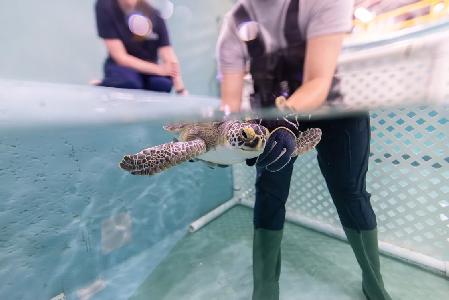John Gartrell at the Afro-American faced a daunting task: digitizing more than one million photographs in the newspaper’s archives, many of them 50 to 70 years hold, delicate and unable to be run through an auto-feeding scanner.
Then one Johns Hopkins University student showed up with a 100-pound, table-length robot called Gado with a suction cup that picked up photos, shifted them to a flatbed scanner and moved them off the scanner once the scanning was finished.
Before Gado, Gartrell had scanned and digitized 5,000 photographs by hand. After Gado? The robot made quick work of 30,000 archived photographs.
This is Project Gado.
Project Gado is the brainchild of 23-year-old Thomas Smith, a 2011 Hopkins graduate who studied cognitive science and cultural anthropology. He had been working on an oral history project while in college about a neighborhood in the middle of East Baltimore only to realize “there weren’t really any photos of the neighborhood,” he says. Or, at least, he had yet to find any photos.
Smith soon found himself among the archives of the Afro-American, which has a Baltimore office blocks from Johns Hopkins, and discovered a trove of photographs from East Baltimore’s past. Just one problem—the Afro had no researchers to digitize the photographs Smith required.
This was in 2010, when some digitization machines cost upwards of $70,000. “Obviously the Afro wouldn’t be able to afford something like that,” says Smith. “I concluded I could build a robot that would do the digitization autonomously.”
He set to work constructing a robot that utilized Arduino open-source hardware. The end product was a clunky, unwieldy device that needed two people just to be carried. But after a trial run at the Afro, where Gado scanned nearly 1,000 photographs effortlessly, Smith had built a digitization robot that automatically did the work Gartrell had been doing by hand, and for under $500.
Watch the Gado 2 robot in action at September’s Columbia TechBreakfast.
[youtube https://www.youtube.com/watch?v=OF8SAyHAi64&w=650&h=366]
Those Afro-American photos are now available on GadoImages.com, for both educational and licensing and publishing purposes. The money collected from licensing the site’s high-resolution photographs is circulated back to the Afro to continue Gartrell’s archiving work and the Gado scanning project.
“The idea is that it will grow organically as people license images,” Smith says.
After graduating, Smith continued work building what he calls the “IKEA version” of Gado. With financial assistance thanks to a grant he received from the Abell Foundation in June 2011, he reconstructed the Gado robot into something that people can snap together, “Makerbot-style,” says Project Gado marketing director—and Thomas’ wife—Amy Smith.
Additional funding from the library at Johns Hopkins and the National Collegiate Inventors and Innovators Alliance enabled the Project Gado team—housed within Smith’s company, ESDA LLC, which occupies space in the Eastern Campus of the Emerging Technology Center—to build 10 Gado 2 robots, some of which are being shipped to different groups and universities nationwide.
So far, the city of Cambridge, Massachusetts, has purchased a robot, and the University of West Florida and the Maryland State Archives have placed robots on reserve.
Join the conversation!
Find news, events, jobs and people who share your interests on Technical.ly's open community Slack

Baltimore daily roundup: The city's new esports lab; a conference in Wilmington; GBC reports $4B of economic activity

Baltimore daily roundup: Find your next coworking space; sea turtle legislation; Dali raided and sued

Baltimore daily roundup: Johns Hopkins dedicates The Pava Center; Q1's VC outlook; Cal Ripken inaugurates youth STEM center

